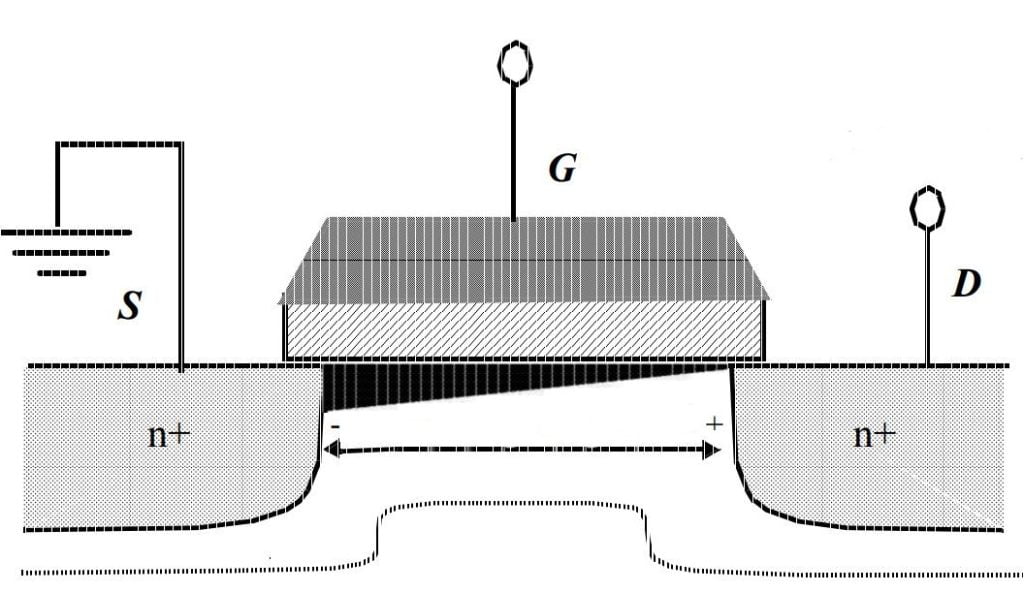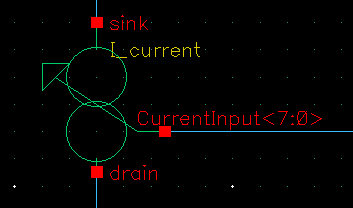Channel-Length Modulation (CLM) is an undesirable second-order effect in MOSFETs, which increases the drain current (Ids) when the drain voltage (Vds) also increases.
Channel Length Modulation, in CMOS technologies, is caused by a reduction or shortening of the effective length of the inverted channel region, resulting in an increase in the drain-source current (Ids). The Channel-Length Modulation, together with the Body effect, is one of the most common undesirable effects in MOSFET devices.

In this post, we are going to consider an NMOS device operating in the saturation region, but the results are equally applicable to PMOS devices. In summary, there are 3 relevant second-order effects on MOSFET devices: Channel-Length Modulation, body effect and subthreshold conduction. All these topics are covered in chapter 2 of Razavi’s bible book.
Deeper in the Channel-Length Modulation
We all are familiar with the equation for the drain-source current in the saturation region under strong inversion (SI):

where λ is the CLM coefficient associated with the channel-length modulation effect, which is often neglected in the equation for simplicity.
Let’s start with the ideal situation…
Ideal Scenario
Here the drain-source current (Ids) is independent of Vds at the saturation region.
In the following I-V characteristic curve for an ideal device, the current (Ids) is independent of drain-source voltage (Vds). The current (Ids) traces a nice straight horizontal line once the saturation point is achieved.

In a physical NMOS device, the channel is pinched-off at the drain end. So, any variation in the drain voltage Vds doesn’t change the shape of the inverted region (dark black).

Realistic Scenario
In a real circuit behavior, when the drain-source voltage (Vds) increases, the current also does. In the following I-V characteristic curve, the CLM effect is visible in the saturation region. Note: the CLM is slightly exaggerated for better visualization.

In a physical NMOS device, the pinched-off point is moved away from the Drain, towards the Source due to the electron field of the drain pushing it back. As a result, the uninverted region of the channel expands toward the source.
This expansion causes the reverse-bias region to adopt an asymmetrical shape, separating it further from the drain, as depicted in the figure. Consequently, the effective channel length (Leff) of the transistor is reduced as the drain-source Voltage (Vds) increases.

As a result
The resistance of the channel decreases due to a decrease in the effective length (Leff) of the channel, causing an increase in the drain current (Ids).
![]()
Due to the on-resistance of the channel is proportional to the channel length, the output resistance of the NMOS device is also marginally decreased.
The effect of the the channel shortening can be seen in the drain current equation for a MOS device in the saturation region:

The reduction of the length leads to a higher current. The previous equation can be rearranged in function of the CLM parameter lambda (λ).
As a consequence, the transconductance gm equation now becomes more complex:

Channel-lenght Modulation and Lenght paramenter
The channel-length modulation is considered a “short-channel effect”, which becomes more and more relevant in the new advanced nodes with shorter MOSFET lengths.

The channel-length modulation effect can be reduced by using longer transistor lengths or cascode structures.
Channel-length modulation intensifies when:
- source-to-drain separation is shorter
- drain junction is deeper
- oxide insulator is thicker
Analogy in BJTs Transistors: Early effect
An analogous phenomenon occurs in bipolar devices, a similar increase in current is seen with increased collector voltage due to base-narrowing, known as the Early effect.
This analogy in the current has influenced the use of the term “Early effect” for MOSFETs as well, as a synonym for “channel-length modulation“.

Both parameters reflect how much the current increases with the output voltage due to modulation effects. A larger Early voltage (V_A) means lower sensitivity to voltage changes (smaller λ), which is generally desirable for achieving more ideal current characteristics.




